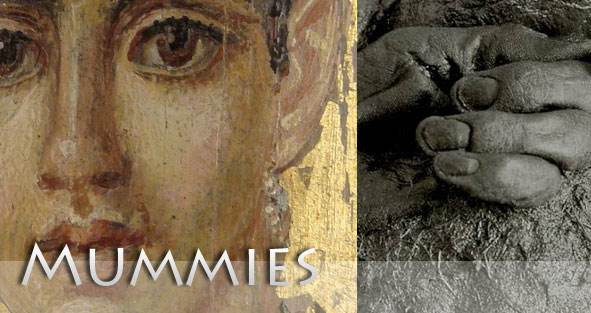
Not much is known about Ancient Roman mummies also known as fayum mummy portraits or simply mummy portraits. Mummies today are mainly associated with Ancient Egypt as this technique of burial was the foundation of their death practices and religious beliefs. In Egypt, mummification was practiced for the royal and elite such as the pharaohs, priests, and the common folk. However, extra care and preservation techniques were mainly used for the pharaohs and citizens of high importance. It should also be noted the common folk underwent mummification just not as elaborate as their wealthy counterparts. They were usually buried in dry sand and little attention was given to their preservation due to costs.
As Egypt was conquered by Alexander the Great and Roman rule, a remarkable thing started to happen during the Captic period. Naturalistic painted portraits on wooden boards were attached to mummies instead of the typical Egyptian style death mask. Even though these types of mummies didn’t have the typical Egyptian death masks, three-dimensional funerary masks were also found that portrayed the deceased in a realistic method unlike the Egyptians. These masks resembled the paintings and were used for Roman burial rituals.
This technique of mummification is believed to have started in the first century and lasted until the third century. Two groups of portrait mummification can be identified in this time period by the technique used to create them; wax paintings or tempera which is a fast-drying medium that has colored pigment mixed with a binder. Tempera paintings are known for its long lasting abilities. It stopped when oil paint was invented.
Like the Egyptians, these mummies were also done for the elite and wealthy. It was mainly found on mummies who were affluent citizens, military personnel, and religious figures. When a majority of these style mummies were found they were found without a painted portrait. The mummies that were found mainly depicted younger people and children.
These mummies are believed to be Egyptian, Greek, and Roman and were mostly found in Egypt. Men, women, and children are shown with elaborate jewelry and elite clothing. Some of the mummies found also had the persons profession.
It has been suggested this style of mummification was linked with Roman funeral masks. This is where Romans displayed their ancestors in the atrium of their house. Furthermore, the Romans had wax masks made to ensure the continuity of the family line. The masks were typically worn by professional mourners as this was common practice in Ancient Roman society. Besides burial practices in Ancient Rome, Romans also honored their dead with festivals and everyday rituals.

